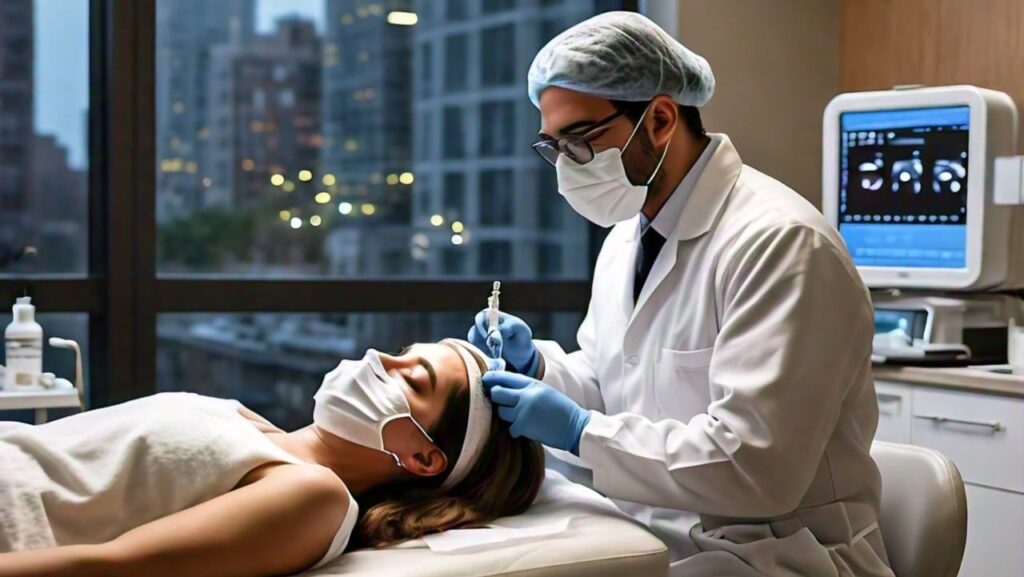Platelet-Rich Plasma (PRP) therapy is emerging as a groundbreaking treatment option in the fields of sports medicine, orthopedics, and aesthetics.
Utilizing the body’s own healing mechanisms, PRP therapy is designed to accelerate recovery, reduce pain, and promote tissue regeneration. But what exactly is PRP, and how does it work?
What is Platelet-Rich Plasma (PRP)?
Platelet-Rich Plasma is a concentration of platelets derived from a small sample of the patient’s blood. Platelets are known for their role in clotting, but they also contain growth factors that are essential for healing and tissue repair.
By concentrating these platelets, PRP therapy can significantly enhance the body’s natural healing processes.
How is PRP Prepared?
The process of creating PRP is relatively straightforward. It begins with drawing a small amount of the patient’s blood, usually from the arm. This sample is then placed in a centrifuge, a device that spins at high speeds to separate the blood components. T
his separation process isolates the platelets and a small amount of plasma from the red and white blood cells. The result is a plasma-rich solution with a concentration of platelets five to ten times higher than that found in normal blood.
Applications of PRP Therapy
PRP therapy is versatile, with applications across various medical fields. Some of the most common uses include:
Orthopedics and Sports Medicine: PRP is frequently used to treat musculoskeletal injuries, such as ligament sprains, tendonitis, and osteoarthritis. It has shown promise in speeding up the healing process of damaged tissues, allowing athletes to return to their activities faster.
Aesthetics and Dermatology: PRP is also popular in the cosmetic industry, often referred to as the “vampire facial.” It is used to rejuvenate the skin, reduce fine lines and wrinkles, and improve overall skin texture. It has also been used to promote hair growth in patients with thinning hair.
Surgery and Wound Healing: In some cases, PRP is used in conjunction with surgical procedures to enhance healing, reduce inflammation, and minimize scarring.
Mechanism of Action
PRP works by releasing growth factors at the site of injury or treatment. These growth factors recruit and increase the proliferation of reparative cells, such as fibroblasts and stem cells.
This leads to the formation of new collagen, blood vessels, and other tissues. Essentially, PRP enhances and accelerates the body’s natural healing process.
The PRP Procedure: What to Expect
PRP therapy is typically an outpatient procedure that takes less than an hour. After the blood is drawn and processed, the PRP solution is injected into the targeted area using ultrasound guidance to ensure accuracy.
Most patients experience minimal discomfort during the procedure, with only mild soreness at the injection site afterward.
Benefits and Effectiveness
The benefits of PRP therapy are compelling:
Natural Healing: Since PRP uses the patient’s own blood, there is minimal risk of adverse reactions or infections.
Non-Surgical: PRP is a minimally invasive treatment option, often providing an alternative to more invasive procedures like surgery.
Reduced Recovery Time: By accelerating the healing process, PRP can shorten recovery times and help patients resume their normal activities more quickly.
While PRP therapy has shown promising results in many studies, it is important to note that its effectiveness can vary depending on the condition being treated, the severity of the injury, and the patient’s overall health.
Some patients may require multiple treatments to achieve the desired results.
Considerations and Risks
Though generally considered safe, PRP therapy is not without potential risks. These include:
Pain at the Injection Site: Some patients experience temporary pain and discomfort at the injection site.
Infection: As with any injection, there is a small risk of infection, although this is rare with PRP.
No Immediate Results: PRP promotes natural healing, which can take time. It may take several weeks to months before the benefits become noticeable.
Is PRP Right for You?
PRP therapy is not suitable for everyone. It is essential to consult with a qualified healthcare professional to determine if PRP is a viable option based on your medical history and current condition.
Factors such as age, overall health, and the specific injury or issue being treated will influence the decision.
Result
Platelet-Rich Plasma (PRP) therapy represents a modern, innovative approach to pain relief and tissue regeneration. By harnessing the body’s own healing capabilities, PRP offers a promising solution for those seeking a natural, non-surgical treatment option for various conditions.
As research continues to evolve, PRP is poised to play an increasingly significant role in the future of medicine, helping patients heal faster and more effectively.

